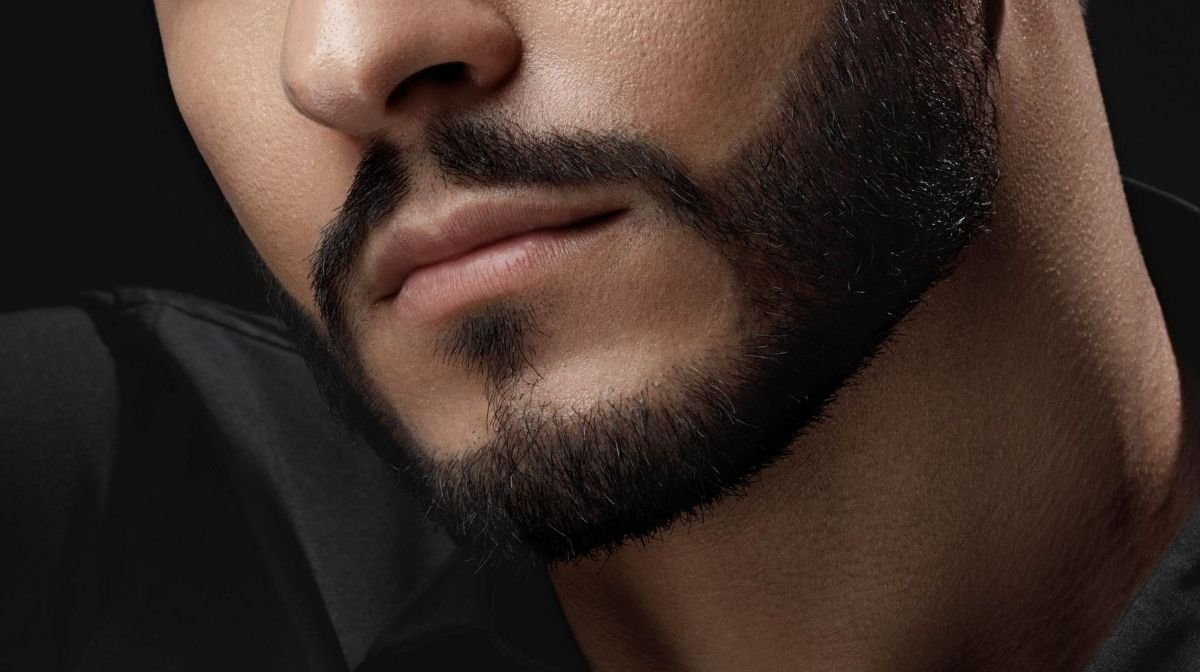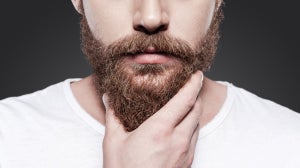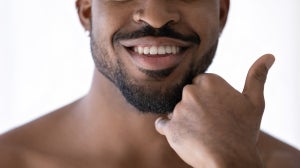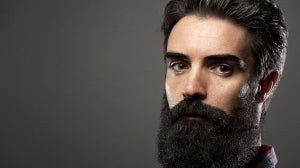
Let me tell you a story about men, beards, and a new fragrance. It begins with gods, kings, presidents, and historical figures who were nearly always depicted with long, flowing beards. While we don’t know precisely what they smelled like, beards were considered the very symbol of strength, wisdom, and manliness. Later, there were an intrepid few who risked their necks at the hands of the town barber just to be different.
But then a guy with the stalwart name of King Camp Gillette introduced the double-edge safety razor in 1903, ushering in the archetypal clean-shaven guy - the one the world grew familiar with from magazines, movies, and television.
A century on, beards are staging a major comeback. Only this time, it was the working guys sporting growth - the brewer, the baker, the bicycle maker.
Today, nearly 120 years since King Camp Gillette made it safe to shave at home, roughly half of all men are back to sporting facial hair. Among younger men, that number is even higher.
As beards took over more and more faces, the Gillette Company already knew that shaving and beard care fit seamlessly together. After all, a man’s face still needs to look good, feel good, and smell good, whether hair is left to sprout in certain places or not. So, why not develop a special brand of beard care products that include facial skin and hair care, as well as razors, trimmers, and shaving gel?
Enter the idea for King C. Gillette (KCG), a quintessentially masculine brand that doesn’t have to stop to ask for directions. The brand and its signature fragrance celebrates the modern beard, while calling to mind the days of Gillette’s founder - the person who elevated the craft of male grooming in the first place, and made it so men everywhere could finally primp in the privacy of their own bathrooms.
It was all good news for an enduring and trusted global company devoted to the male visage. The field was once again open for Gillette to deliver on something men really needed and would clamour for. As a premium brand, King C. Gillette would make a statement with a signature fragrance that men with beards could call their own. It was here Gillette encountered its first challenge: what, exactly, was 'masculine' these days?
What is Modern Masculinity?
Men are changing and have been for some time. Gender fluidity, relationship culture, and dramatic shifts in men’s and women’s roles at home and in the workplace over the past decade have obliterated the wall between the sexes, certainly as far as style and fragrance are concerned.
Unisex fragrances abound. A fragrance designed to be worn mainly by young men with beards can no longer rely on your father’s (or grandfather’s), with notes of bergamot, oakmoss and geranium fougerè. It was this realisation that underpinned the opportunity to make fragrance a defining element of the King C. Gillette brand. The KCG fragrance would re-define the masculine scent for today’s young men.
This was going to be a project that would benefit from a Prestige Fragrance approach, and a Fragrance House that could deliver on that. Fortunately, that House was in-house.
Procter & Gamble uses fragrance more than any other company in the world. Almost every product we make has a scent, and each one has been considered closely in a thorough process, with many originating from the P&G House of Perfume. There, we research trends and ingredients - we visualise, and we have labs to create and test samples.
All of this work is performed by highly trained perfumers under the guidance of a master perfumer, which, in this case, is me. I have been a perfumer for Procter & Gamble for more than 30 years. As a master perfumer, I am also responsible for directing the efforts of our House of Perfume, and training those who are coming into the work we do.
The Brief
The first order of business was to pin down this KCG guy. Who is he? What is he like? What moves him? What motivates him? Gillette has known him all his adult life. Their detailed project brief brought him to life for us. We also needed a complete understanding of the benefits for each product and how they would be communicated in order to layer the fragrance appropriately.
This is where it got interesting. Gillette already knew all there was to know about beard hair, having spent more than a century perfecting ways to separate it from a man’s face. But letting it grow was new. Now they were dealing with hair on the face that - like hair on the head - had to be managed, and even pampered. Not only that, this hair was located right under the guy's nose and any other nose his nose came close to.

Clearly, beard hair had to smell good, and keep smelling good for as long as possible. Designing a fragrance that would layer seamlessly from application through shaving, cleansing and on into the night would be a challenge.
And what exactly should a beard smell like? In a world constantly evolving gender roles, styles and products, beards remain distinctly male. The KCG scent would need to evoke Gillette’s heritage of premium male grooming. In other words, it would remind us where good-looking and good-smelling men came from in the past. That was the easy part - the problem was figuring out what direction they were heading in now.
Inspiration
There is so much to say about smell, the dominating influence it has on our thoughts and memories, and subsequently our emotions; there's the fact that the average human nose can distinguish around 10,000 different odours; the fact everyone smells things differently, including themselves and other people.
Our worlds are full of smells, most of which come one way or another from nature. And so, we immersed ourselves in the male version of this world. We explored male fragrance trends. Where do they come from? What are men eating and drinking these days? What do they like to do? Where do they like to go? What are they wearing? Who do they like to be with? What are they feeling?
At first, it was a verbal brainstorm, with words on sticky notes everywhere. We literally tried to describe what we were smelling. We matched words to ingredients and compared what we found with the ideas each of us keeps and refines in our fragrance sketchbooks.
The Vision
From words, we began to visualise the fragrance by building with pictures and colours sourced from our explorations. Images of men and their activities, their enjoyments and relationships, helped us to understand better the context our fragrance would encounter and how a man sees himself in these various contexts. Fragrance must work its magic first on the wearer.
Smells that appeal to us can come from anywhere. Many are timeless but often rise or recede on broad cultural trends. Right now, for example, empowering smells are coming from foods and cocktail mixology. And so, we gathered ingredients and spices, and sometimes props, to give us a feel for such smells as we visualised them. We wanted the KCG fragrance to be warm, yet fresh, and a celebration of male luxury; dark wood, evoking images of a mahogany library lit in one corner by a ray of sunlight - so we brought in a teak tray, and spread upon it a few leaves of rich tobacco. Add vanilla bourbon into the mix...set out a bit of patchouli oil. Balance the dark with pictures of a breeze next to a handful of fresh lavender, with ginger for effervescence and caramel for mouthwatering indulgence.
As we engage all of our senses in this pursuit, we bring a sense of the fragrance to life.
Biology and Ingredients
Like any recipe, there are ingredients that have to interact with biology. By now, we had an idea of the smells we were looking for. But in order to source the right ingredients, we must pair the touch points on the body - facial skin and facial hair in this case - with the right layering. Body chemistry interacts with any fragrance when it's applied. Water, friction, grooming behaviour, duration...all of these factors help determine how we select and prepare ingredients, and how we construct the fragrance for each product.
Plus, beards are different. For starters, facial hair is almost twice as thick in diameter than scalp hair. Cleansers and moisturisers have to work harder to get to the dead skin cells below, and the sweat and sebum that are otherwise scraped away in a good shave. The fragrance must activate during application to give men the pleasure and confidence that these products are working.
About that fragrance - the stops had been pulled. KCG was getting the good stuff:
Bergamot for its bright, uplifting quality
Ginger for spiciness
Geranium for a calming vibe
Lavender to convey serenity
Tonka bean, from which we get the rich creaminess of vanilla with a whiff of cigar
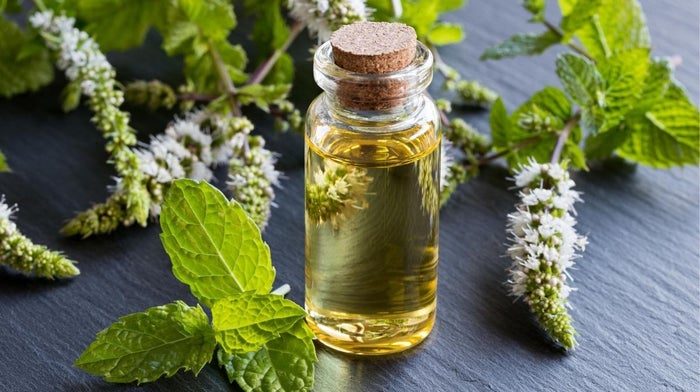
Testing
So, then we started to put it together. The idea was to come up with dozens of prototypes that we systematically narrowed down to a handful of variations, before ranking them again. To accomplish this, we have a place we call the 'test kitchen', a lab, really, where we can access thousands of raw fragrance materials and processing techniques.
I keep saying 'we' because I typically work with three other perfumers through the critical phases of formulation, where nuance counts for everything. After that we engage other trained colleagues - who we call noses - to function as a panel of evaluators. You’ve heard of vintners admitting they’ve tasted and sniffed so much wine they can no longer trust their senses to work like the average wine connoisseur’s. Well, something similar goes on in the fragrance business. We have the knowledge, the experience and the craft, but we need other trained noses to test our creations. These evaluators help decide the best of the prototypes by bringing valuable consumer understanding into the picture and by helping us artists maintain some objectivity.
Design and Communication
We designed the fragrance, made the final choice - but we had something else to do. We put everything we learned about men, beards and the King C. Gillette guy, and how he should smell, into a brief that gives this fragrance its provenance. This is extremely important to understand, because the only place a fragrance exists on its own is in our House. Once it leaves, it's destined for a holistic design approach in which fragrance becomes inseparable from brand narrative, the look of the package, the models, the colours, elements and sounds employed in advertising. Done properly, this contributes to a form of 'synesthesia', where one sense triggers another. When a consumer encounters King C. Gillette in the store, online, on TV or in a magazine, on his bathroom shelf...we want all his senses to jangle!
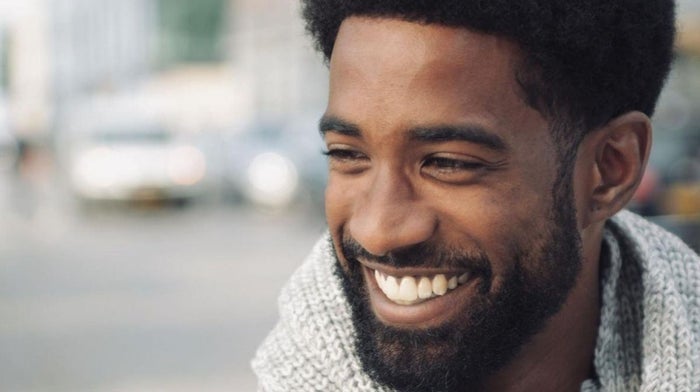
The project team did such a good job on this communication brief that I was not surprised when it turned out we had a hit on our hands.
We perfumers like to think of ourselves as fine artists, pushing ideas around without boundaries. While we are the ones behind the curtain trying new things, new combinations, and new ways to interpret what nature and science offer in the way of sensorial experience, we also know the impact of what we do.
Fragrance in products can bring joy, pleasure, confidence, energy, romance, serenity, and so much more to those who experience them, and that is ultimately the biggest motivator for the things we do.
Women have known this about fragrance for a long time. Men have suspected as much, but until recently were mostly spectators in the pageant. Today, in the world of fragrance, we like to think that men have evolved - and they have.
Although, truly, it is the world that has evolved around them. Men can be more of who they are. They can look and smell the way they want to, and do things in ways that weren’t open to them in the past. King C. Gillette celebrates all of that.

